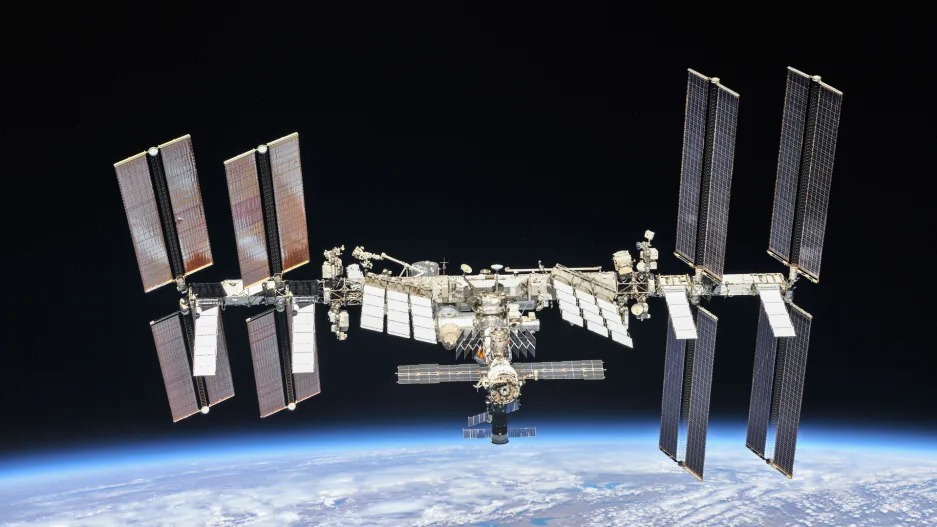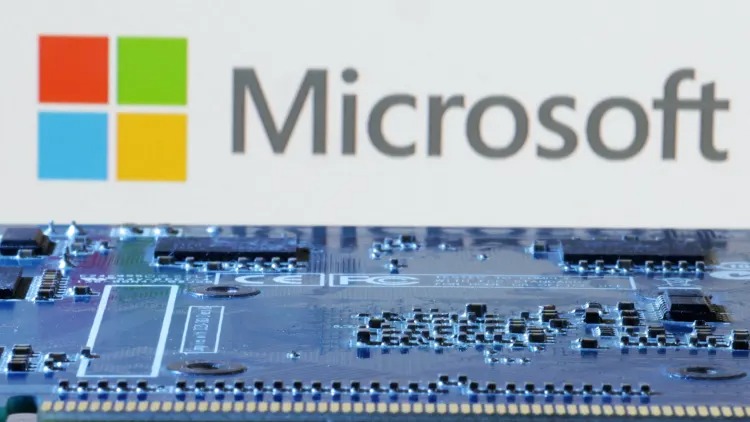- | 9:00 am
Here’s how NASA plans to replace the International Space Station—by becoming a private company’s tenant
The space agency plans to rent space on a privately built station, and it wants to have astronauts moved in to their new home before ISS operations end in 2030.

The International Space Station (ISS) has been a home for American astronauts in low Earth orbit since 2000, but now NASA wants the ISS to be the last crew quarters it owns that’s so close to Earth.
Instead, the agency plans to rent space on a privately built station, maybe on more than one. And it wants to have astronauts moved in to their next abode before ISS operations end in 2030 and that facility is sent on a controlled reentry that will have it mostly burn up above the Pacific Ocean’s most remote stretches.
“We want to be one of many customers,” NASA associate administrator Robert D. Cabana told audience members at a commercial-space conference in Washington, D.C., in February.
It’s part of a sweeping transition at NASA to a job-to-be-done approach: Instead of asking aerospace contractors for a thing, in the form of a vehicle built to the agency’s dictates that it will then own, it’s giving them a task, subject to broader requirements, to complete as they see fit.
“They’re drawing the conclusion that it’s workable, that they can be a customer for a provider under commercial terms,” says John M. Logsdon, a space historian and professor emeritus at George Washington University’s Elliott School of International Affairs. “If they could do it for transportation to orbit, why not activity in orbit?”
MEET THE CONTENDERS
NASA’s first commercial-station contract came in January 2020, when it awarded $140 million to Axiom Space to build a series of modules to be docked to the ISS starting in 2025.
Axiom, which staged the first fully commercial mission to the ISS last year (and is one of this year’s Fast Company Most Innovative Companies honorees), plans later to detach the completed assemblage to operate as a free-flying station.
In December of 2021, NASA awarded three more contracts for “commercial destinations”:
- A team led by Nanoracks won $160 million to design its Starlab, a four-person station designed to be sent to orbit in a single launch that’s now projected for 2028.
- Blue Origin, Jeff Bezos’s space startup, and partner companies won $130 million to develop a large, multiple-module station called Orbital Reef, which it aims to have operational in 2027.
- Northrop Grumman, the longtime aerospace contractor that delivers cargo to the ISS on its Cygnus spacecraft and also has a traditional contract to build NASA a lunar-orbit outpost called Gateway, won $125.6 million for a somewhat smaller multi-module station that it hopes to launch in 2029.
NASA plans to award a second round of contracts in its 2025 fiscal year that will lead to actual purchases of station services from at most two companies—with the pool not limited to the above four.
LIKE THE ISS, BUT FASTER AND CHEAPER
Replacing the ISS can’t involve recreating its prolonged construction process, which ran from 1998 through 2011. Or matching operating costs that NASA projects will run $1.3 billion in fiscal year 2027 alone, not counting crew and cargo transportation.
To start, all three free-flying-station concepts feature an early move-in day for astronauts.
“We don’t have to do construction in orbit,” says Clay Mowry, chief revenue officer at Nanoracks’ parent firm Voyager.
Northrop Grumman’s station would be ready for occupation after its first module’s launch. Orbital Reef’s would be open after a second launch, according to NASA’s 2021 press release; Blue Origin, a habitually silent company, did not return requests for comment.
These companies also should have much cheaper launch options than the Space Shuttle and the Russian Proton rockets that lofted most of the ISS. SpaceX’s Falcon Heavy is already in service; two other U.S. heavy-lift vehicles, SpaceX’s much larger Starship and Blue Origin’s New Glenn, have yet to reach orbit.
Their concepts further minimize “extra-vehicular activity” spacesuit-required work.
“EVA is a very costly value proposition,” says Andrei Mitran, director of strategy and business development, civil and commercial space at Northrop Grumman.
“Everything is run internally so that crewmembers can easily access and replace as needed,” adds Mike Baine, chief engineer and lead designer at Axiom.
Even solar power has advanced greatly over the last quarter century or so.
“Space-based solar cells are in excess of 30% efficient,” Baine says—more than double the efficiency of the original, aging ISS panels, now being augmented with a set of roll-out arrays.
POTENTIAL CUSTOMERS
But with NASA only planning to pay for its share of a station, private operators need other customers. As Keith Cowing, editor of the NASA Watch news site and a former NASA manager who worked on station components in the 1990s, asks: “Is there something that can be done up there that people will pay for?”
While the prospect of space tourism can be intriguing enough to get people to inventory frequent-travel points (Nanoracks has even brought on Hilton to help design its station’s interiors), companies looking to do research and development in microgravity are the more likely customers.
“The healthcare segment shows a lot of promise,” says Mowry. Nanoracks, which already has an airlock and an external platform on the ISS, plans to host a research park on its station.
But other space agencies that lack their own stations could be potential customers. Mitran cites Canada, Europe, Australia, Japan, and India as possibilities, commenting, “We’re looking at this as an international business model.”
Mowry and Baine also nod to India, which plans to launch its first crewed mission in the next two years.
“Countries that want to develop a space program, those are potential customers,” Baine says.
A KEY SHIFT
As big of a transition as it was for NASA to hand over astronaut transportation to SpaceX (and, sometime soon, Boeing) on a contract basis, doing the same with long-term orbital occupancy will be no small step either.
“NASA’s got to let up on some control, and the private sector’s got to take on some risk,” says Cowing.
“We made the transition a long time ago robotically, with the demonstration that communications satellites are money machines,” Logsdon adds. “So what we’re doing now is trying to make the transition to find out whether there are areas of human space activity that can generate profit for an owner.”







































